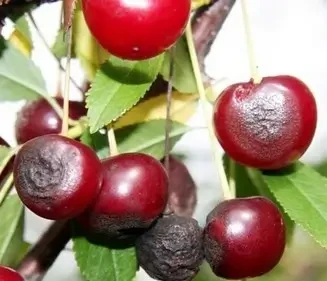Exports to Mainland China in the 2023/24 season are significantly increasing compared to the previous year, but still below peak levels, offering great opportunities for Australian exporters of cherries in the coming years.
According to the recent Stone Fruit Annual - Australia report from the United States Department of Agriculture (USDA), the 2024/25 season will see an increase in production in some fruit-growing regions due to above-average rainfall. Among these, cherry production is expected to increase by 8% and exports by 25%.
Plant Production
The main Australian cherry-growing regions include the Huon Valley in Tasmania, the Goulburn Valley in central Victoria, Young and Orange in central-eastern New South Wales, and the Adelaide Hills in southeastern South Australia, while smaller regions include Stanthorpe in Western Australia, southern Queensland, and the South Australia region.
Stanthorpe in southern Queensland, the southeastern corner of Western Australia, the Yarra Valley in Victoria, and central New South Wales. Tasmania is the southernmost region of Australia, with the coolest climate and the longest growing season, producing a large number of high-quality cherries.
In the warmer climates of Queensland, New South Wales, South Australia, and Western Australia, the cherry season runs from mid-late October to about mid-January. Further south, in Victoria, the cherry season usually begins in early-mid November and ends in mid-late February.
These areas can take advantage of the demand for cherries in their countries ahead of Christmas. In Tasmania, the season starts in late December and usually ends in mid-February. Since Tasmania also has the latest season of all the growing regions, especially after the peak domestic demand for Christmas, which coincides with the strong demand during the Lunar New Year period in Asia, the state primarily focuses on export markets.
According to the report, Australian cherry production is expected to increase to 20,000 tons in the 2024/25 season, compared to 18,500 tons in the 2023/24 season. The projected production is 17% higher than the average of the past five years and 8% higher than the previous year. Despite the increase in the area cultivated with cherries, the forecasted production remains low, in line with recent years.
For the 2024/25 season, an increase is expected, mainly due to the favorable production conditions currently anticipated. The 2022/23 season was significantly lower than previous years due to unusually rainy weather during the harvest in New South Wales and the state of Victoria. The 2023/24 season is much lower than expected, also due to the second consecutive year of rainy weather during the harvest in the same region, but with a weaker impact.
Late autumn and winter temperatures were at or below average in most of the major cherry-growing regions, and minimum temperatures were lower than last year. This provided the cherry trees with a sufficient winter chilling period to develop the fruit buds.
Exports
Australian fresh cherry exports are expected to increase significantly to 5,000 tons in the 2024/25 season, compared to 4,000 tons in the 2023/24 season. If achieved, this projected export level would be the second-highest ever, when production was similar to that expected for the 2024/25 season.
The improvement in conditions, combined with the favorable rainfall expected in the coming months, is expected to improve the overall quality of the fruit. Exports are expected to increase as a greater percentage of cherries will reach export quality.
Although overall exports have fluctuated year by year, the five main export destinations - Hong Kong, China, and Taiwan, along with Vietnam and Singapore - account for over 75-80% of total exports. These markets are all in Asia and are relatively close to Australia, making air transport more convenient compared to more distant destinations.
Exports to these five markets are expected to grow due to the improvement in the quality of cherries and overall export volumes in the 2024/25 season. Exports to Mainland China in the 2023/24 season increased significantly compared to the previous year but are still below peak levels, offering significant opportunities for Australian cherry exporters in the coming years.
Source: Asiafruit
Image: Australian Horticulture Statistics Handbook
Cherry Times - All rights reserved










